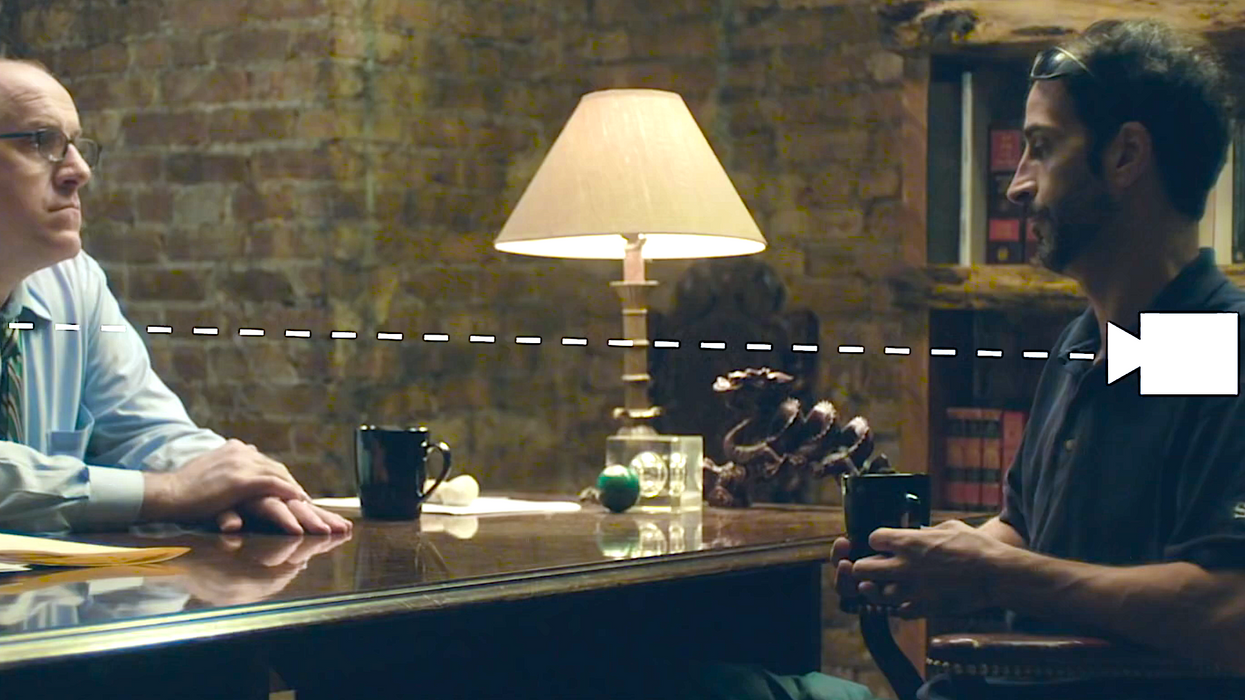What Exactly Does a Script Supervisor Do? [VIDEO]
Do you know all the elements that a film's script supervisor has to track?

Managing a movie's continuity is a huge undertaking.To show how difficult and complex it can be, Vanity Fair sat down with the best of the best, Martha Pinson, an experienced script supervisor who has worked extensively with Martin Scorsese. Her work includes films like Hugo, Shutter Island, The Departed, and The Aviator.
The video shows a quick scene and how easy it can be to make a dozen mistakes, even in a few minutes. Pinson explains what she's looking for and how to fix common errors.
Watch the video below.
So what are some of the things she keeps an eye on in her script supervisor notes?
Prop continuity
Placement of props is extremely important. Over a long shoot, props can get shuffled around or accidentally replaced. A script supervisor needs to make sure things don't jump around between shots or randomly change.
Time continuity
All the clocks in a scene should show the same time. A wristwatch needs to match a wall clock, for example. It can be a very small and nitpicky detail, but if time plays a big part in your story, it will be noticeable.
Eyeline continuity
As characters move around in a scene, a script supervisor has to track the various eyelines (where characters are looking) and make sure they match from shot to shot. It's extremely obvious if an actor is looking in the wrong place between cuts. And Pinson explains it can throw off the entire emotion of a scene.
Recurring issues
If you know any actors (or have ever shot a dining scene), you have probably heard complaints about how hard it is to ensure continuity as characters eat or drink. If an actor commits to eating a burger at the top of a scene, he's going to be eating a burger all day as the shot resets for hours. This is because the burger has to look the same at different points of the scene through all the different takes. The same goes for anything a character is drinking.
One way to prevent this issue is to not have the character eat or drink anything where it will be super obvious how much is missing. Think things like bowls of cereal or opaque mugs.
Wardrobe continuity
This is something that's important especially if you shoot over multiple days. Make sure all the clothing stays consistently styled and the same color. If a character takes off a jacket or sunglasses, make sure it stays off unless it's shown getting put back on. That goes for other accessories as well.
Dialogue continuity
This is a big one. Script supervisors need to make sure the words actors are saying match the action around them. If a character mentions a time of day, then that should be reflected in the set (including lighting and props, like clocks and watches).
Action continuity
This is a character's action shown over multiple takes. If they're running in one shot, then they need to still be running in the next cut.
If they reach for something with their right hand, the next shot should show the object in the right hand, not the left. This is another thing that is super obvious and jarring when it's done incorrectly.
The 180-degree rule
The 180-degree rule is a well-known cinematography guideline. It states that the camera should stay on one side of an axis between two characters, so one is always on the right and the other on the left.
This rule helps the audience follow and understand what is happening on screen. If characters are suddenly changing sides in a conversation, it confuses spatial relationships for the viewer.
Psst... this is a rule that can be broken, however.
Blocking for position
Blocking errors happen when characters switch positions suddenly between shots, without anything clearly showing why they have moved. So a character standing on one side of a desk in one shot should remain on that side, unless he is clearly shown moving from that spot to another.
Script supervisors should note the key blocking position and make sure the actors return to that point at the start of each shot.
Blocking for movement
When characters move between shots (meaning the movement continues through a take or shot set-up), that movement also needs to be consistent.
If an actor is turning to the right in one shot, he can't then be turning to the left when we cut to another shot. Script supervisors literally need to keep track of every movement an actor makes.
What's next? Take a closer look at continuity.
A video from This Guy Edits examines some examples of continuity errors in big movies.
As the video points out, editors like Thelma Schoonmaker believe continuity isn't the end-all-be-all. She chooses shots for performance, not consistency, believing that the power of the film and acting will distract from any errors. And this is generally correct, since studies have shown that audiences tend to focus on faces (and therefore emotion), rather than minute details.
What do you think? Let us know in the comments.
Source: Vanity Fair











